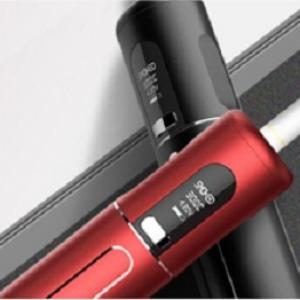Application of MOSFET In Battery Management System
The lithium battery is mainly composed of two parts: the cell and the protection plate PCM (the power battery is generally called the battery management System BMS), the cell is equivalent to the heart of the lithium battery, and the management system is equivalent to the brain of the lithium battery. The core is mainly composed of positive material, negative material, electrolyte, diaphragm and shell, while the protection plate is mainly composed of protection chip (or management chip), MOS tube, resistance, capacitance and PCB. The general parameters of lithium battery are: 50A 30V, 90a 30V, 110A 40V, 160A 60V.
Batteries are mainly used in consumer products, digital products, power products, medical and security products.
Lithium is at the third place in the periodic table, with one electron in the outer layer. It is easy to lose its stable structure, so it is a very active metal. The lithium-ion battery is widely used because of its large discharge current, low internal resistance, long service life and no memory effect. Overcharge, overcharge and short circuit are strictly prohibited in the use of lithium-ion battery, otherwise it will cause fatal defects such as fire and explosion. Therefore, in the use of rechargeable lithium battery, a protection plate will be provided to protect the safety of the battery cell.
The protection board has two core components: a protection IC, which obtains reliable protection parameters by precise comparator; in addition, the MOSFET string acts as a high-speed switch in the main charging and discharging circuit to perform protection actions.
The protection board of lithium battery is mainly composed of maintenance IC (overvoltage maintenance) and MOS tube (over current maintenance), which is used to protect the safety of lithium battery cell. Lithium battery is widely used for its large discharge current, low internal resistance, long service life and no memory effect. Overcharge, overcharge and short circuit are forbidden in the use of lithium-ion battery, otherwise it will cause death defects such as fire and explosion. Therefore, in the use of rechargeable lithium battery, there will be a maintenance board to maintain the safety of the cell.
1. Voltage protection capability
Overcharge protection board: the protection board must have the ability to prevent the core voltage from exceeding the preset value for over discharge maintenance: the protection board must have the ability to prevent the core voltage from being lower than the preset value.
2. Current capacity
As the safety protection equipment of lithium battery, the protection board should not only work reliably within the normal operating current scale of the equipment, but also act quickly when the battery is accidentally short-circuited or over current, so that the battery can be protected.
3. On resistance
Definition: when the charging current is 500mA, the conduction impedance of MOS tube.
Due to the high working frequency of communication equipment, the low error rate required for data transmission, and the steep rise and fall edge of its pulse train, the requirements for the current output capacity and voltage stability of the battery are high, so the resistance of the MOS tube switch of the protection board is small when it is turned on, and the protection board of single energy-saving core is usually 70mΩ. If it is too large, the operation of the communication equipment is abnormal, such as the sudden disconnection of the mobile phone during the call The line and telephone are not connected, noise and other phenomena.
4. Consumable current
Definition: IC working voltage is 3.6V. Under no-load condition, the working current flowing through the protection IC is generally very small.
The self consumption current of the protection board directly affects the standby time of the battery. Generally, the self consumption current of the protection board is less than 10 μ a.
5. Mechanical function, temperature adaptability and antistatic ability
It is necessary for the protection board to pass the sensation and impact test of national standard rules; the protection board can work safely at 40 to 85 degrees and can withstand ± 15kV non touch ESD static test.





